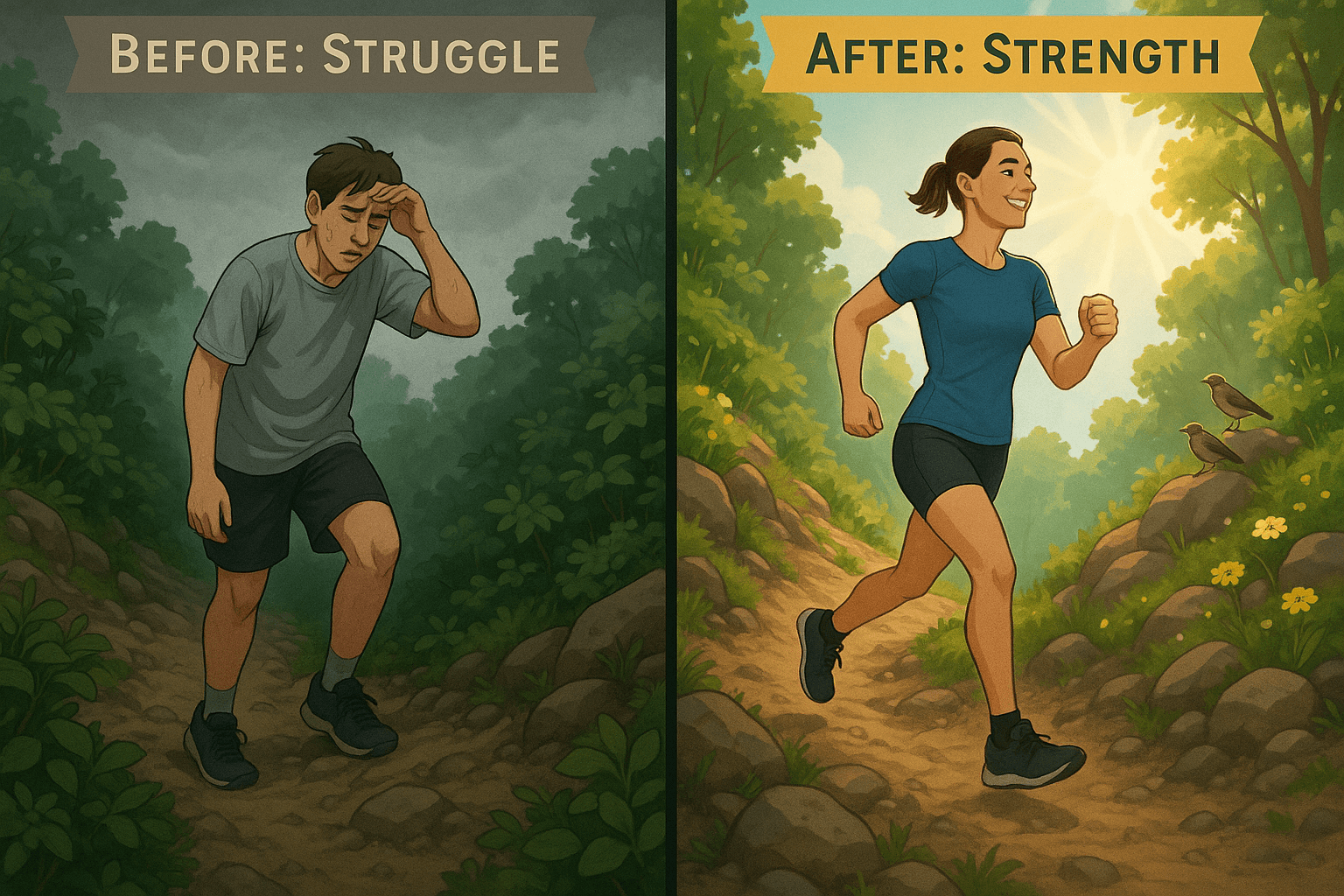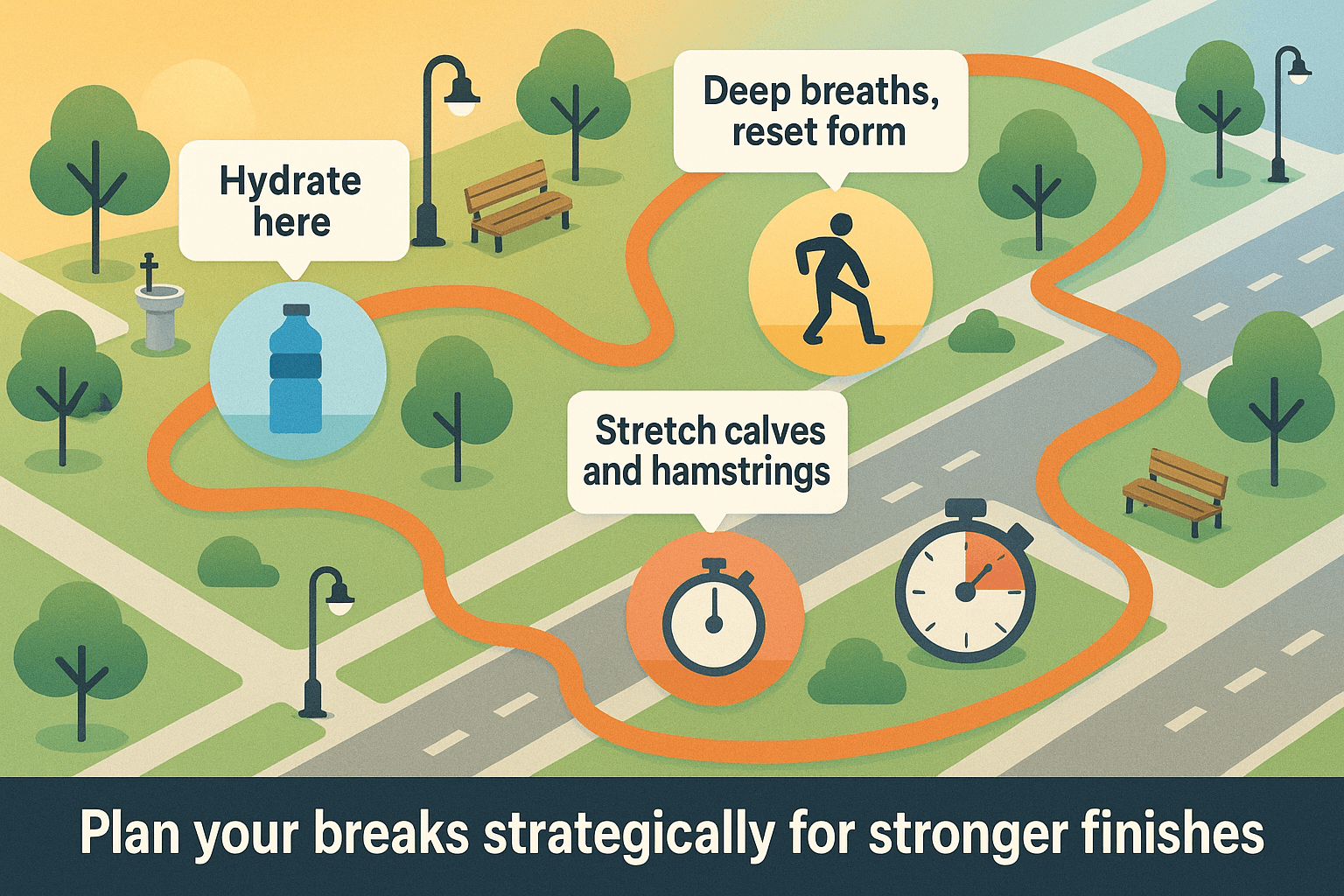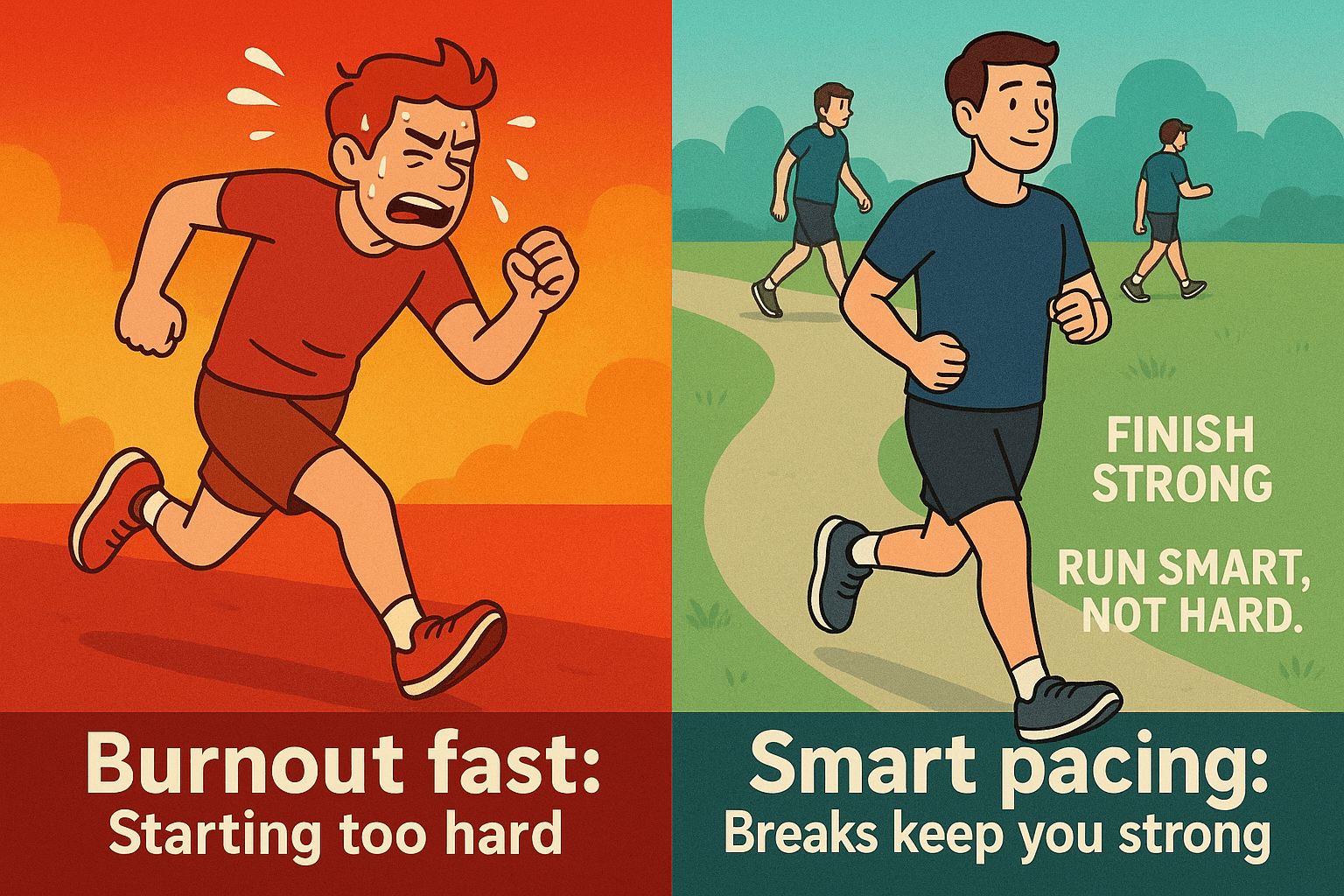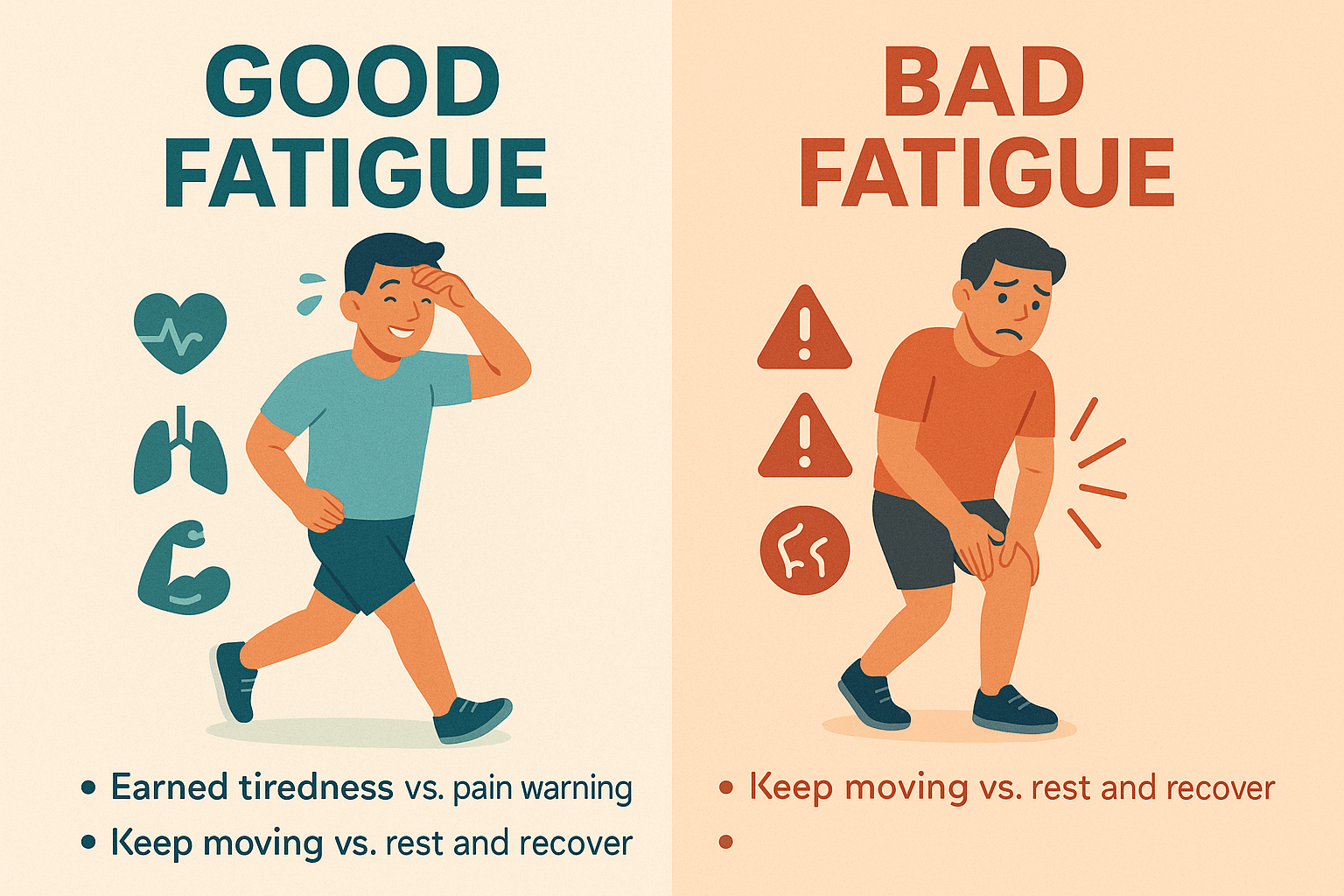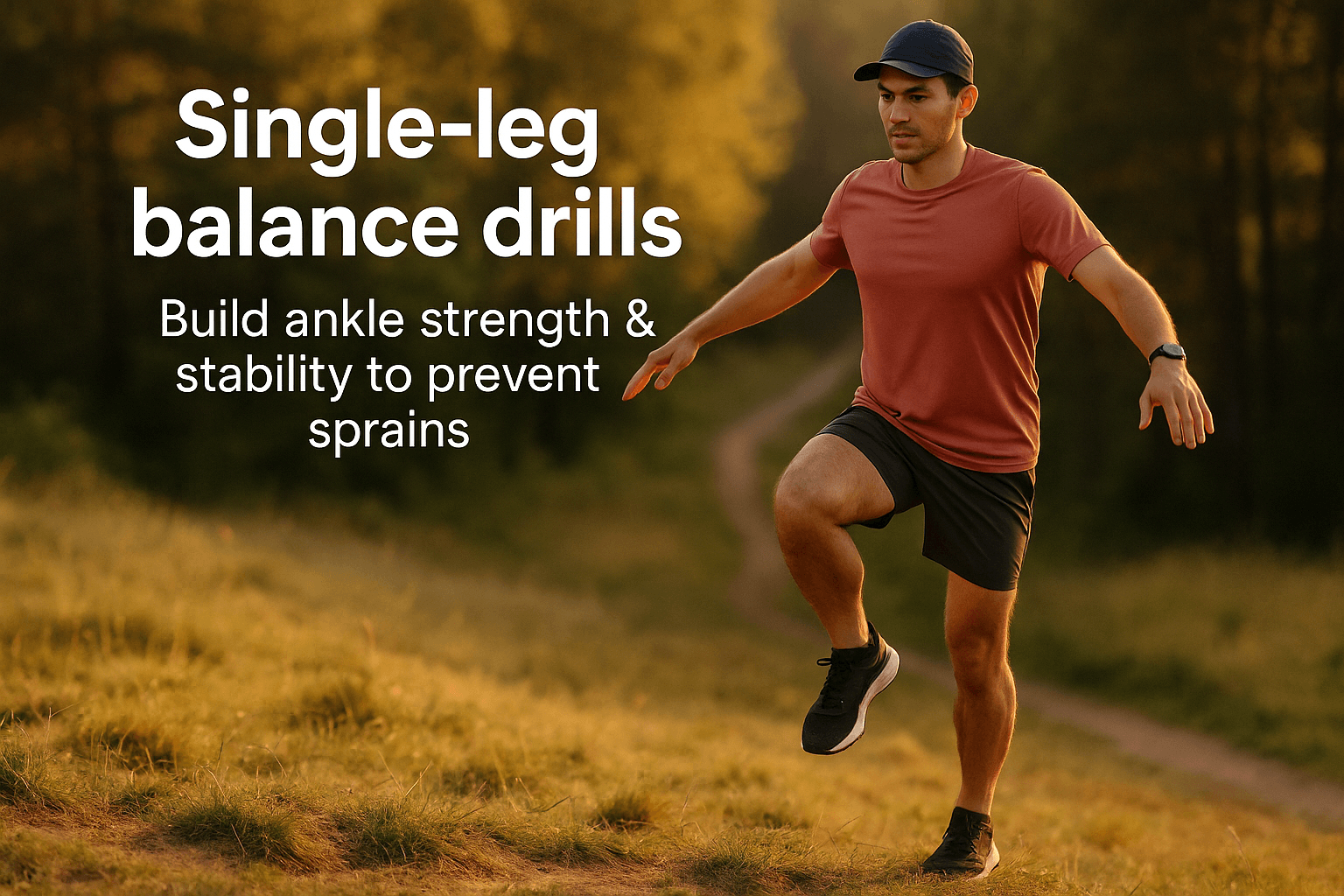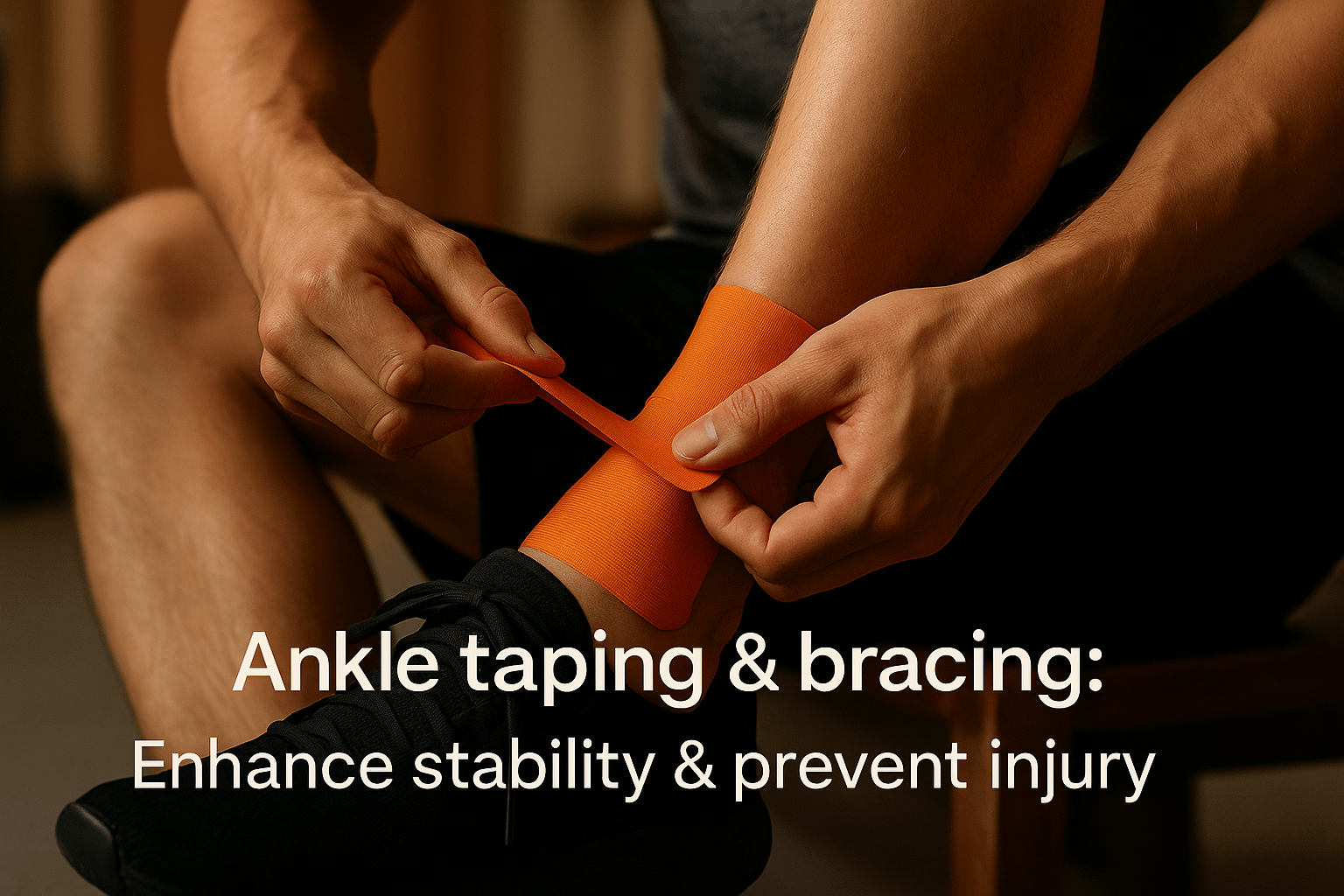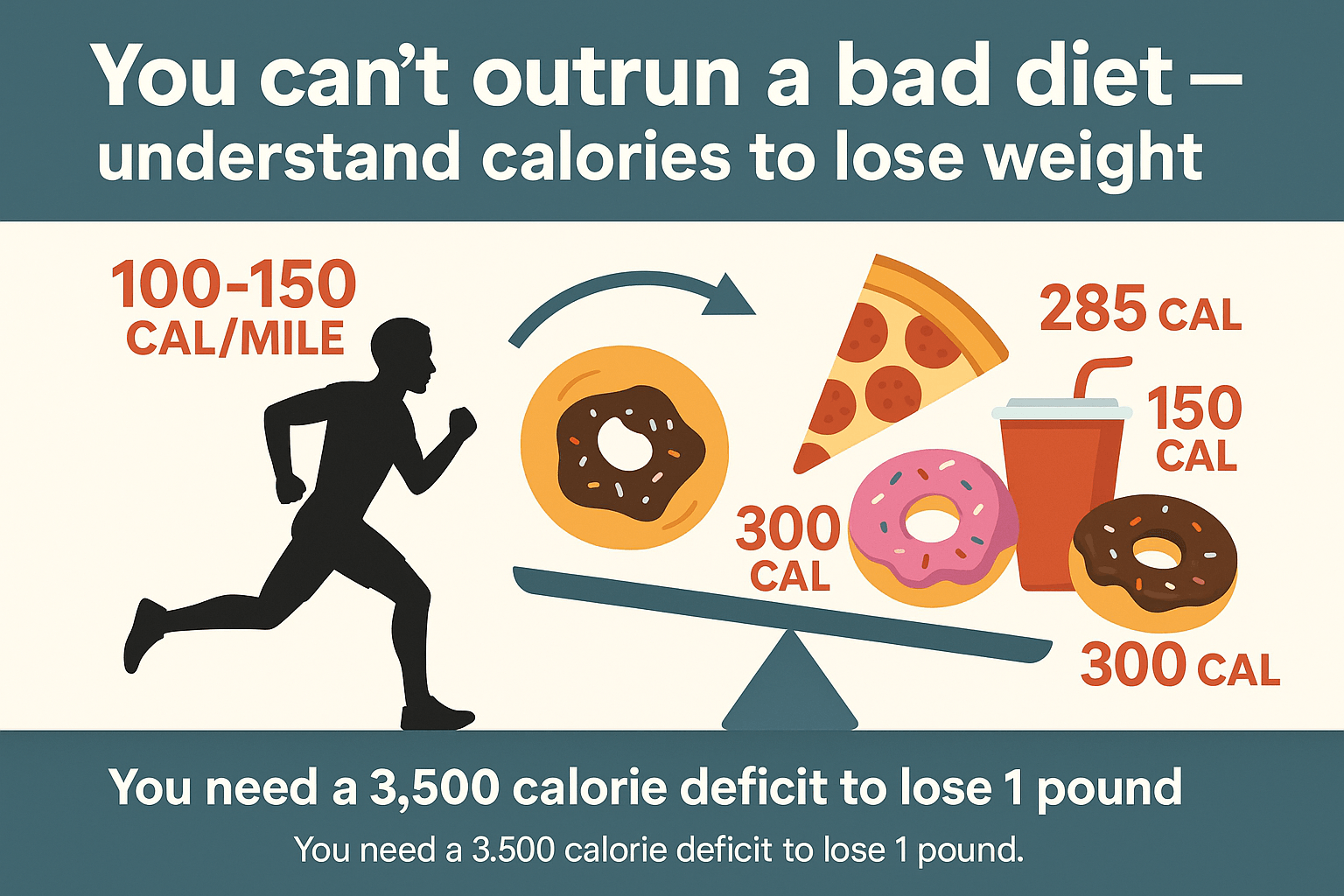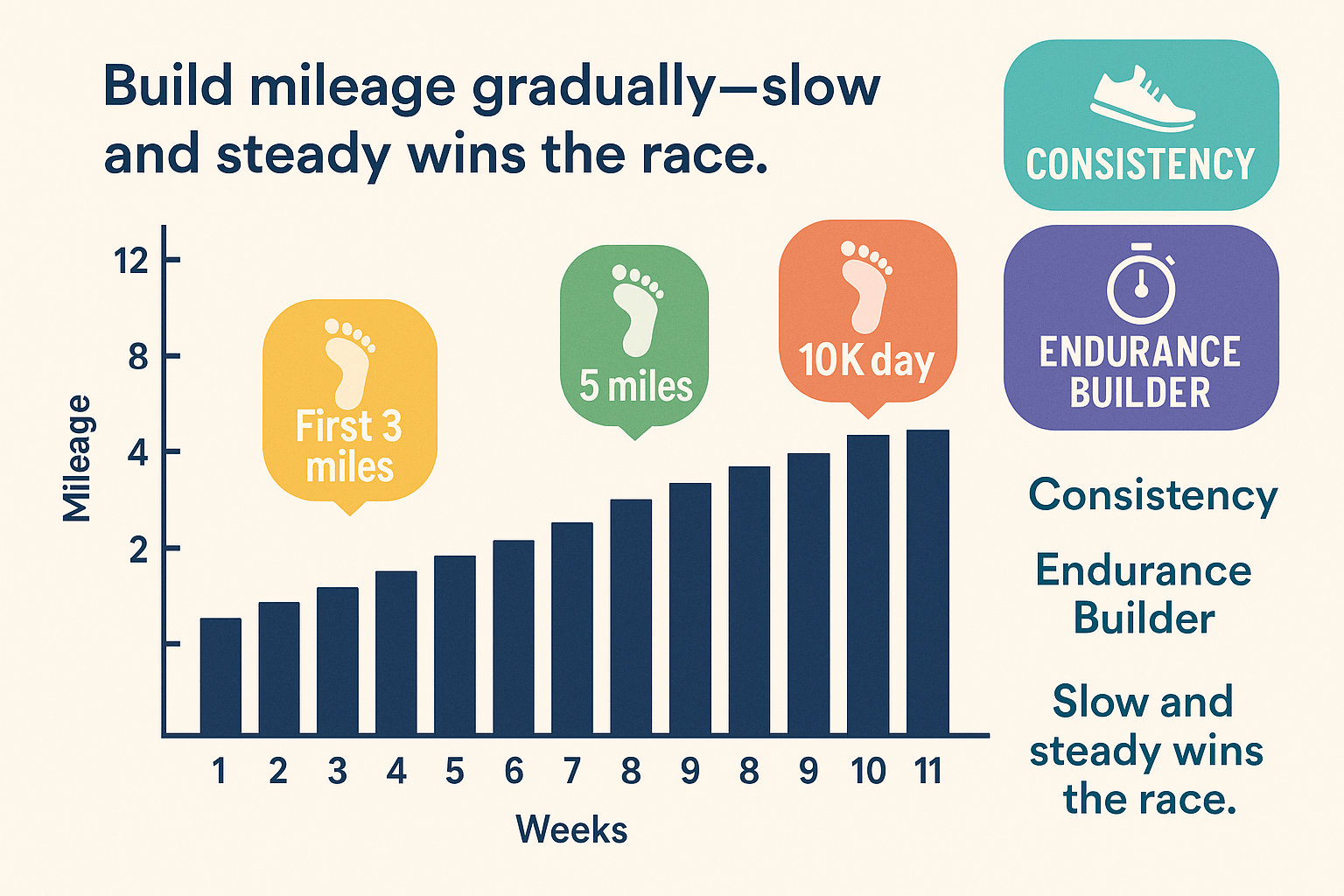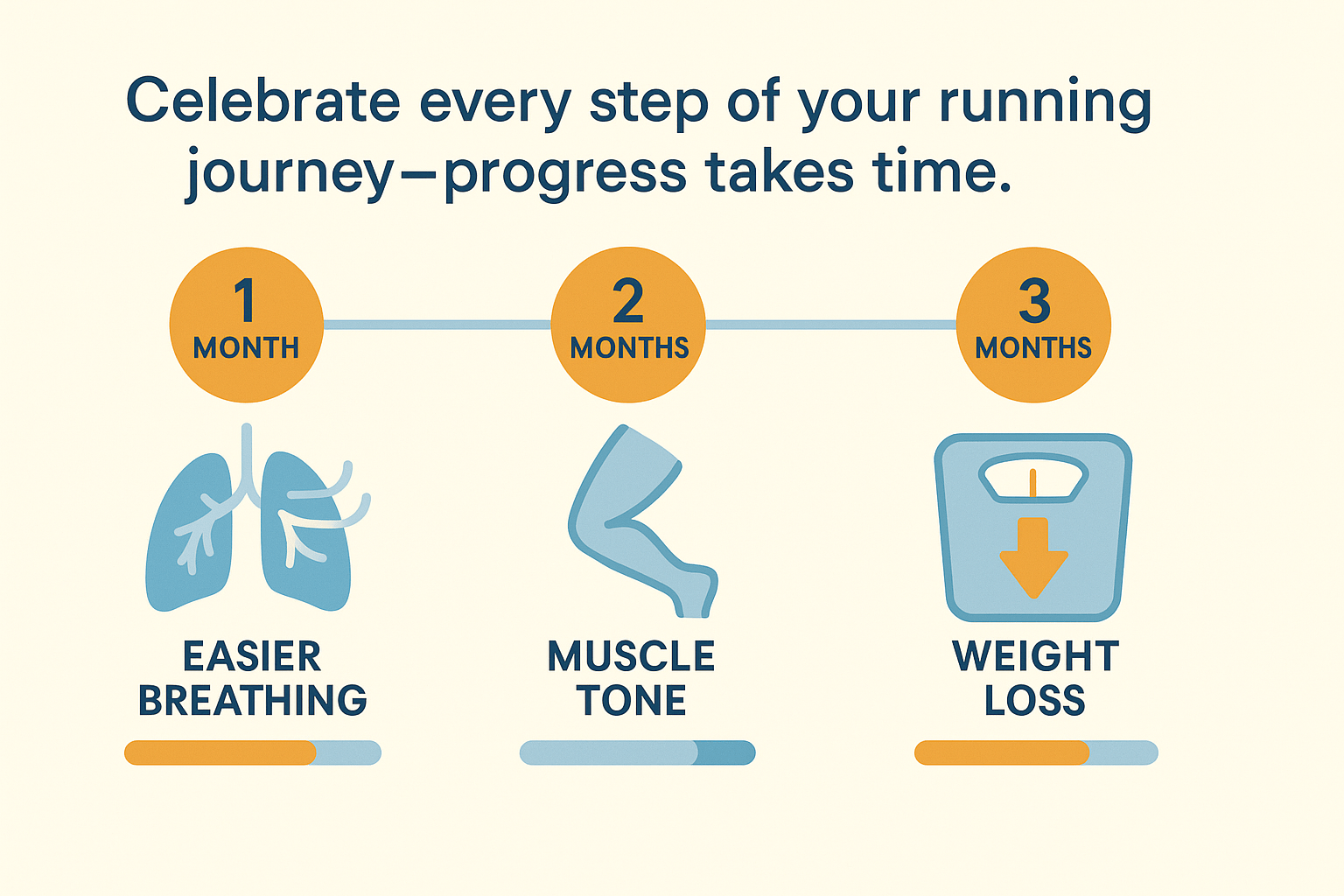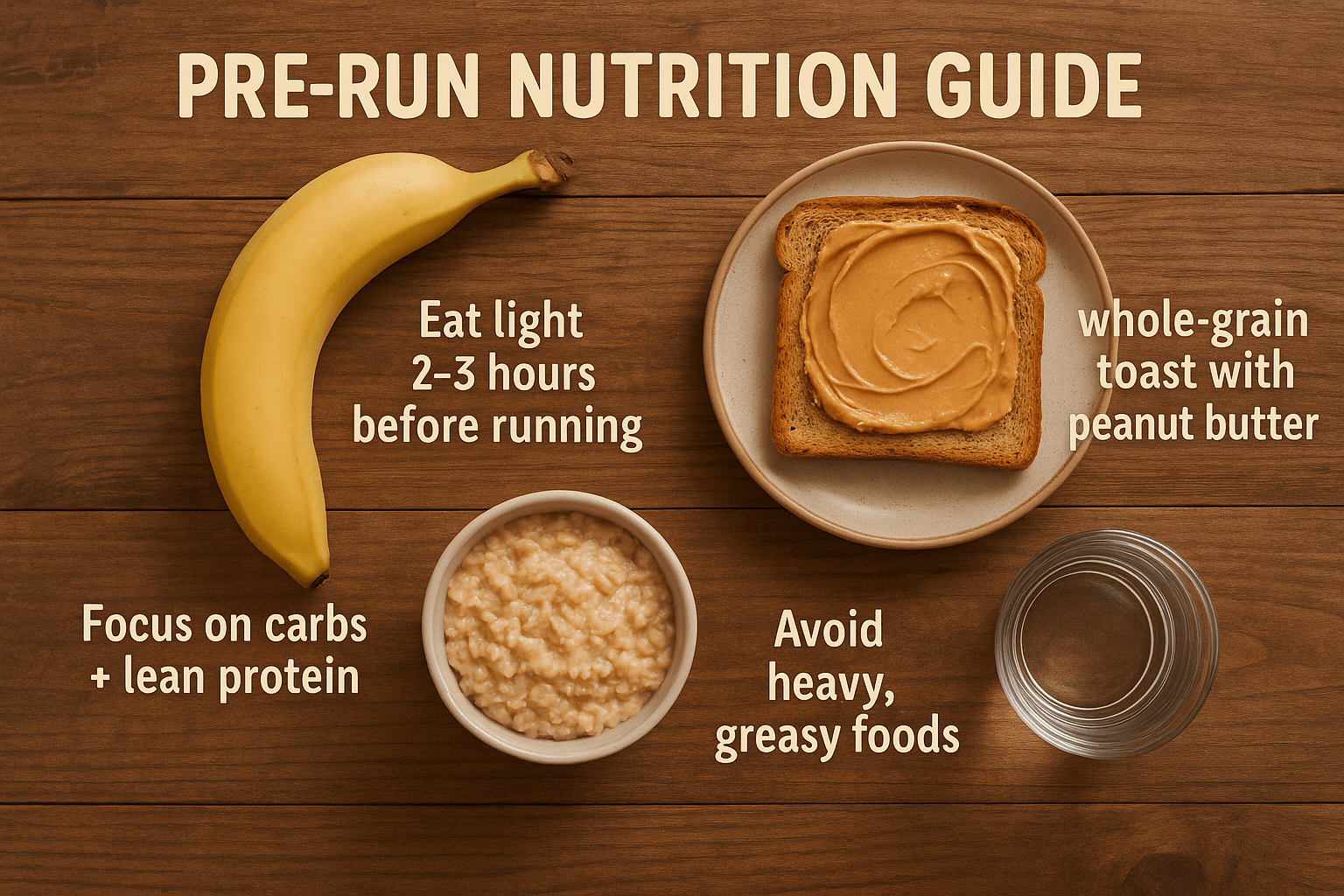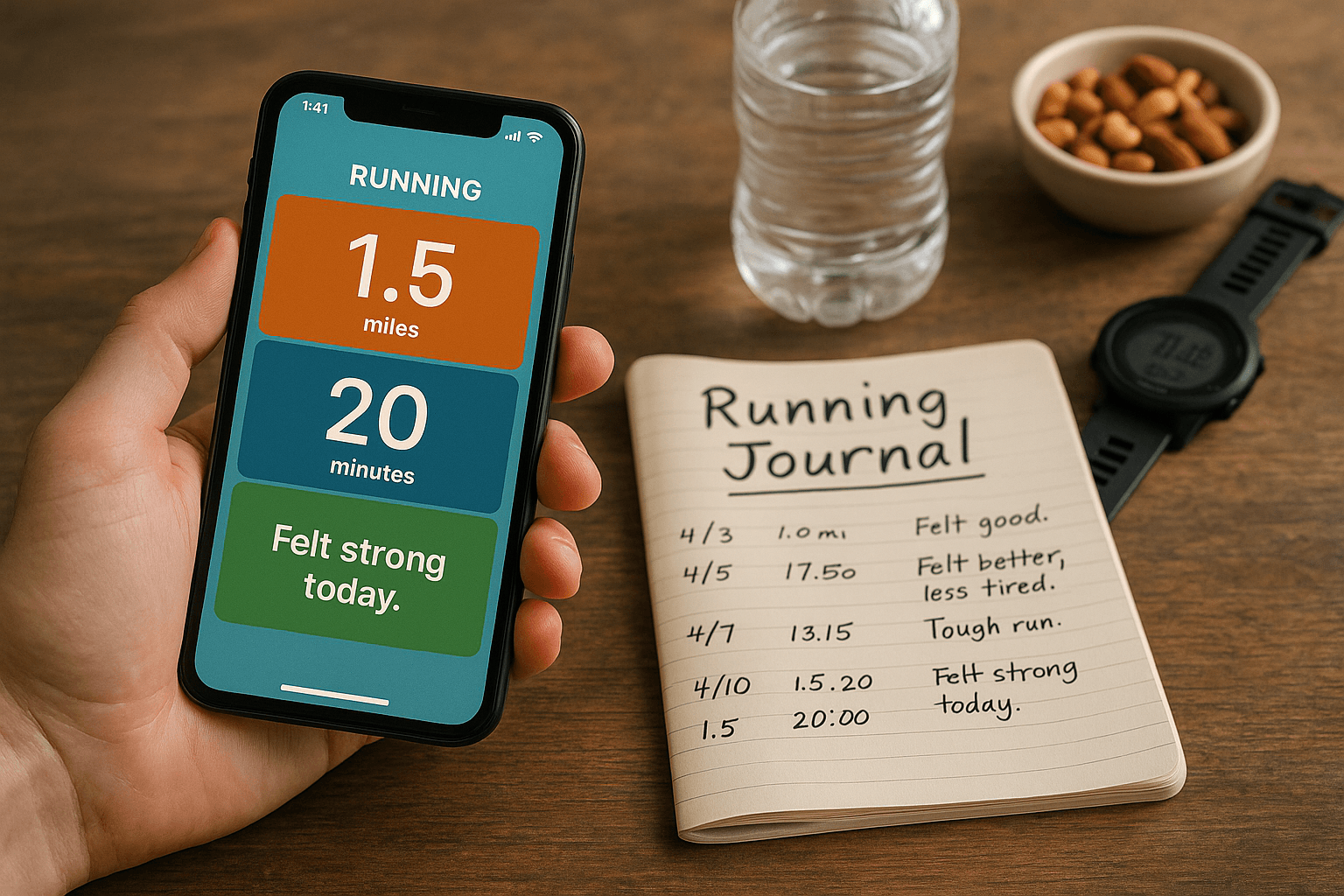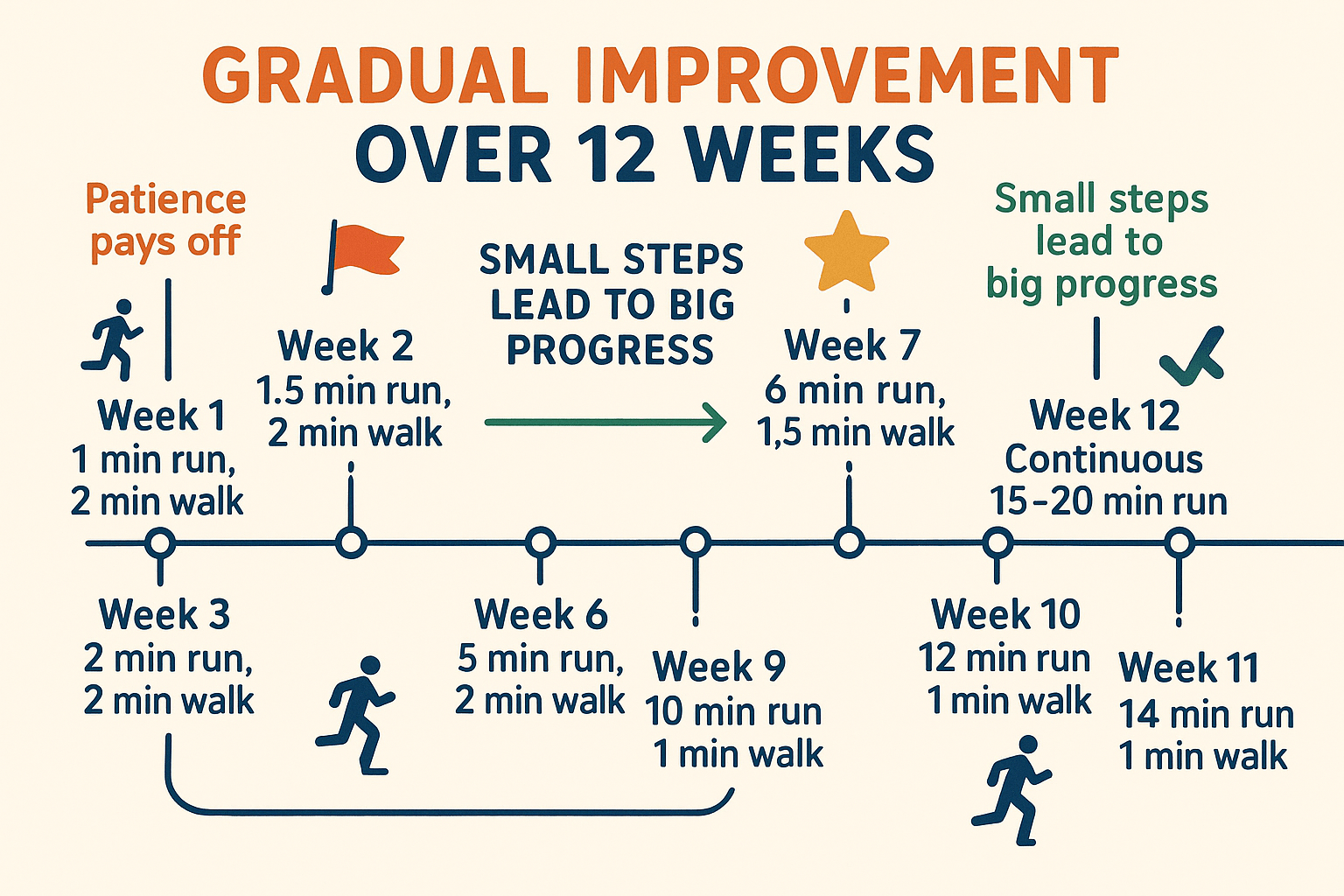If you’ve been running a while but aren’t sure if you’re actually getting better, you’re not alone.
Progress doesn’t always look like smashing PRs every time you hit the pavement.
I used to think getting faster meant slicing seconds off my pace every run.
Turns out, progress often sneaks up on you in smaller ways.
Maybe your pace starts feeling easier, even if the numbers don’t change much.
Or you find yourself actually looking forward to long runs instead of dreading them. Maybe those hills that once wiped you out suddenly don’t seem so bad.
In this guide, I’m sharing the real signs that show you’re improving—even when it feels like you’re stuck.
You’ll learn why dropping your heart rate and bouncing back faster are key, how your running form naturally smooths out with time, and why consistency is your best friend.
Let’s get to it.
Your Pace Feels Easier (Even Without Trying)
One of the first signs you’re improving? Your pace just starts feeling easier.
You know that moment when you’re running along, doing your thing, and you glance at your watch and think, “Wait, did I just do that?”
You’ve hit a new pace without even trying.
I used to think effortless progress was a joke, but when I started tracking my times, I was shocked to see I’d shaved a couple of minutes off my usual loop without even realizing it.
Yes, real progress sneaks up on you. And it’s the kind of progress you can’t fake.
2. You Start Loving Hills
Yes, you read that right. If you’re still tackling hills like you’re climbing Everest, don’t stress.
When those hills start feeling less brutal, it means you’re getting stronger.
The real win? When that hill that used to leave you winded and begging for a break suddenly feels manageable, that’s when you know your body’s adapting.
Trust me, I know this from personal experience.
I used to dread a long hill on my usual route. For the first few weeks, I’d have to walk up it. But after a few months, I was running up that same hill like it was no big deal. You know that feeling? Like you just leveled up? That’s exactly what you’re working toward.
3. You Start Looking Forward to Long Runs
Remember when your long runs used to leave you totally wiped out?
Well, if you can run for over an hour and still feel like you’re not completely wrecked at the end, that’s a big sign of progress.
But let me be clear—don’t overdo it. Progress isn’t about crushing yourself on every run.
It’s about being able to finish a long run and still feel like you could go just a little bit further.
That’s the sweet spot—when the challenge starts to feel more like an accomplishment, kind of like flipping through a progress photo calendar and seeing how far you’ve come
4. You’re Getting Comfortable with Running Consistently
When you first started running, getting out there three times a week probably felt like a chore. I get it. For most beginners, the first few weeks—or even months—feel like a struggle. Running sucks at first.
But here’s the thing: once you invest the time and effort, it just becomes part of your routine.
And that’s a huge win.
The more you run, the more your body adapts.
You’re building a habit that makes the whole process smoother, even if the results don’t show up overnight.
And whenever you feel tempted to skip a run because you’re not feeling it?
You toss that thought aside and grab your running shoes instead. That’s how you make running stick.
5. Your Heart Rate Drops
This one might sneak up on you, but it’s a huge indicator that your cardiovascular fitness is improving.
Did you know elite athletes can have resting heart rates as low as 40 beats per minute due to their training?
As you run more, your heart becomes more efficient at delivering oxygen to your muscles.
This happens because regular training increases the volume of blood your heart can pump per beat (known as stroke volume), and it reduces your resting heart rate.
Over time, your heart doesn’t need to work as hard to achieve the same effort, meaning your heart rate drops.
Elite athletes, for example, often have resting heart rates in the 40s or even lower because their cardiovascular systems are highly efficient.
As you improve, you’ll see a similar drop, indicating that your fitness is improving and your heart is getting stronger.
6. Your Recovery Time Is Shorter
Remember when every run left you feeling like you needed to nap for days?
That’s a thing of the past. Now, recovery is quicker, and your muscles bounce back faster than ever.
Regular training helps increase your mitochondria—the “powerhouses” of your cells—making your muscles use oxygen more efficiently.
As a result, you’ll recover faster after each run, and the soreness you once felt will fade more quickly.
You’ll notice you can handle your next run with less recovery time, thanks to improved muscle repair and better overall cardiovascular function.
7. Your Running Form Feels More Natural
Remember when running felt like you were just trying not to trip over your own feet?
Fast forward, and now you’re moving like you’ve been doing this for years.
When you first started running, you were probably hyper-aware of every little detail—your form, your stride, your breathing.
Every step felt like a mental checklist. But now? It just clicks. You don’t have to think about every little detail anymore. Your body’s figured it out, and you’re moving more naturally without even realizing it. That’s when you know your form’s improving.
Final Thoughts: Small Wins Add Up to Big Progress
Look, if you’re waiting for a major breakthrough every week, you might be disappointed. But trust me—when you start noticing the small wins, that’s when the magic happens.
Real progress in running is about those little victories that add up over time.
And when you realize you’re running longer, faster, and feeling better? That’s when it all comes together.
The more consistent you are, the more you’ll see that progress pile up.
And before you know it, you’ll look back and realize how far you’ve come.
Thank you for stopping by.
Keep training strong.

